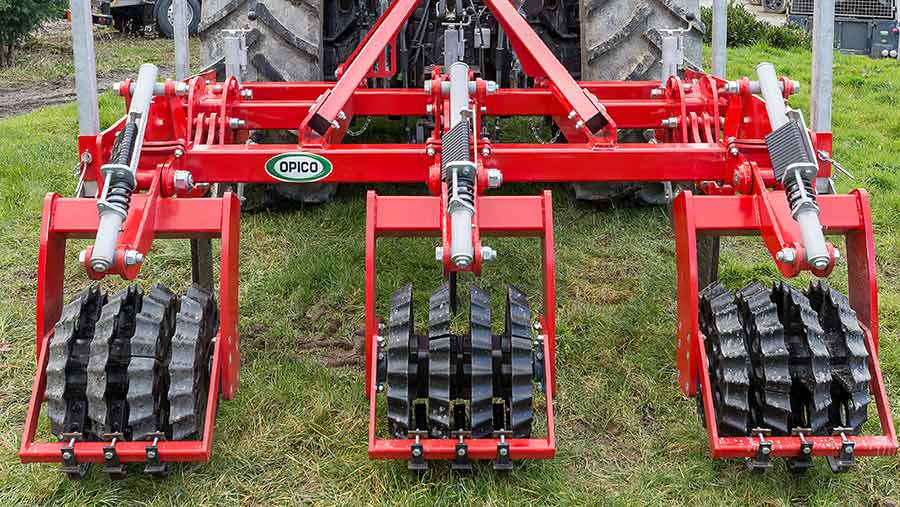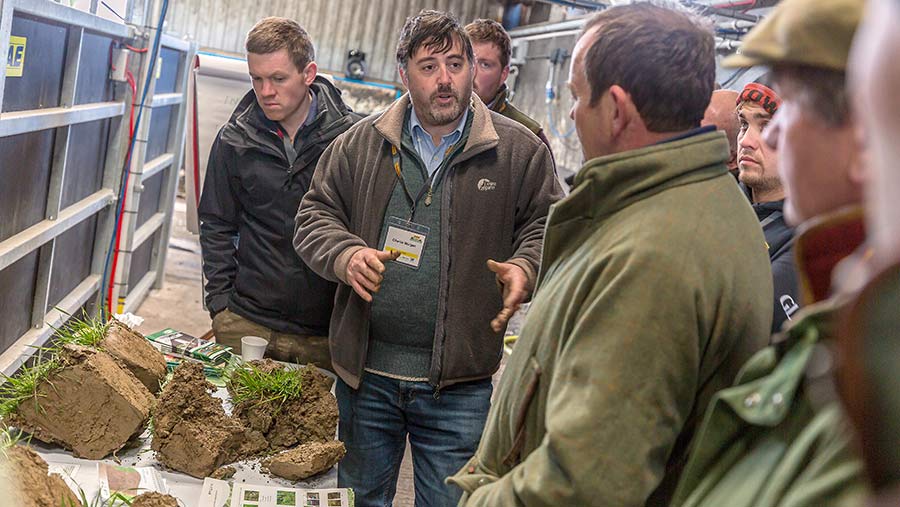Advice for alleviating soil compaction: Which methods to choose
 © Richard Stanton
© Richard Stanton Soils damaged by livestock and machinery significantly reduce the uptake of essential nutrients – they will run off the surface instead of being taken down to the roots.
And the worm populations that drag those nutrients down to the roots will be significantly depleted.
Machinery can help break up compaction zones and improve soil structure.
See also: 6-step guide to assessing soil compaction
The type of machine needed depends on the soil type, texture and the depth of compaction.
Speaking at Farmers Weekly’s Grassland Management event at Carnbwll Farm, Four Crosses, Powys, last week (13 March), Charlie Morgan of Grassmaster advised which method to use.

© Richard Stanton
How to manage deep/heavy compaction – below plough depth
- Use a grass subsoiler to shatter deep compaction
- This will create fissures for roots to extend into, allows excess water to drain away, allows in more oxygen and enables the worm population to thrive.
Key considerations
- When the subsoil is wet, the machine won’t be able to generate a shattering effect and can make the problem worse by smearing the slots it makes.
- Late summer and early autumn is usually best for this approach.
- Sub-soiling will knock back yield by 10% for 12 months so only use this method on fields with heavy compaction.
Managing lighter compaction – the first 6-7in below the surface
- Use an aerator
- Oxygen in the rooting zone can have a big effect on plant growth and, used in the right conditions, grassland aerators can help to get this essential element into compacted soils, improving yields for relatively little cost.
Key considerations
- Conditions need to be dry because the shattering effect of the tines is greater in more brittle soils
- An aerator can be used twice annually
- It might knock back production for a month, but it will pay dividends after that.
Grass Management event
Thanks to NuFarm, Krone, Germinal and Wynnstay, whose sponsorship made it possible to run this inaugural Grass Management event. Farmers Weekly had full editorial control of this article.




